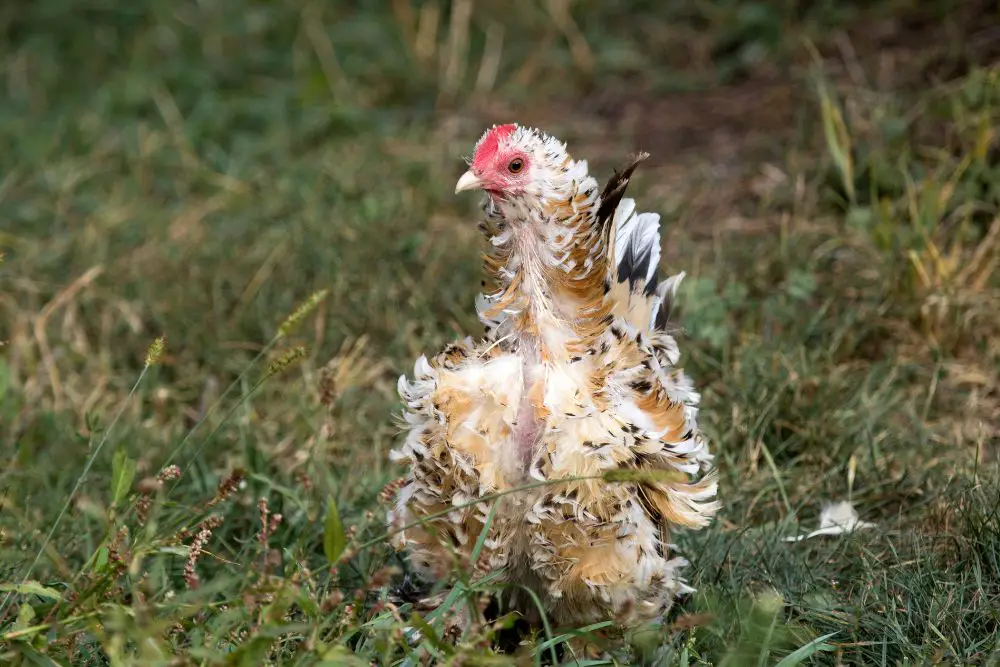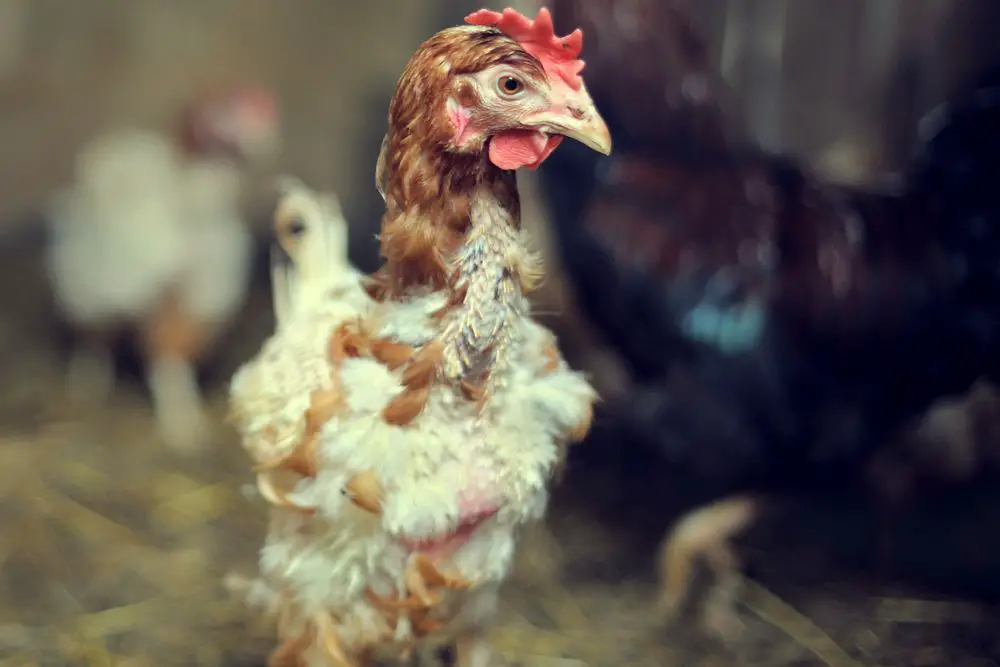Chickens do molt in winter. Molting is a normal and annual process where chickens lose their old, battered feathers and re-grow new ones. It can be frustrating to see your adorable birds losing their feathers, leaving them bare and their body exposed to cold weather, but this process only last 8 weeks.
In this article, we’ll take a closer look into why chickens molt in winter and what you can do to keep your backyard flock comfortable.
Table of Contents
Why Chickens Molt During Winter
As we’ve mentioned above, molting is a normal process that every chicken goes through. The molting process allows chickens to shed off their odd, worn-out feathers and regrow new, warm ones. In addition to growing new feathers, feather loss allows chickens to rest their reproductive organs.
Many backyard chicken keepers hardly notice any changes after their chickens have undergone a soft molt. In the case of a hard molt, the laying hens look as if they have undergone extensive plucking.

The most common cause of molting in chickens is a decrease in daylight hours.
Your broody hens can also molt after finishing their egg-laying cycle, which usually occurs in late summer or around fall.
Other causes of molting in chickens include stress, malnutrition, dehydration, parasites, and excessive heat. Keeping chickens healthy is the key to avoiding these other causes of an unexpected molt.
Best Feeds For Molting Chickens
Did you know that chicken feathers are 80 to 85% protein? By embracing a high protein diet, you can help your birds through the molting process by increasing their calcium and protein intake.
The average layer feed is 16% protein. However, you should buy a broiler feed that is around 20-25% protein during the molting season.
You should also provide your chickens with high-protein treats. Good examples of protein-rich treats that are ideal for molting chickens include:
- Soybeans
- Peas
- Sunflower seeds
- Flax-seed
- Bone meals
- Cornbread
- Cod liver oil
- Mealworms
These treats will help increase your birds’ protein intake and help them regrow their feathers quickly. Plus, your chickens will enjoy eating these treats as they are given to them during those chilly, winter months.
Expectations While Chickens Are Molting
Here is what you should expect when chickens molt any time of the year:
1. Altered Egg Production
Many new chicken owners are surprised to find that their molting hens have stopped laying or their egg production has dropped significantly. Molting hens simply can’t generate enough protein that’s necessary for both feather regrowth and egg production—especially if a hard molt occurs.
2. Dander. Everywhere.
You can expect a lot of dander around your homestead. Whenever your chickens shake themselves, they leave a lot of feathers behind. Your birds might also be lethargic or nervous. They may prefer to stay in dark areas to avoid contact with their flock members and you.
3. They’ll Appear Unhealthy
Molting in chickens can also cause them to lose weight and look unhealthy. Their immune system is often neglected because the chicken’s body puts all proteins and energy into regrowing new feathers. For that reason, it’s important to provide more focused care of your chickens during the molting season.
If you place a heat lamp in the chicken coop to increase daylight hours, you should allow your chickens to finish molting so they can start laying eggs again. Just make sure to get your timing right to avoid leaving your chickens without proper protection, especially if they are undergoing a hard molt in cold weather.
4. Pain For Your Chickens
The growth of pin feathers is a painful process, so it’s best to avoid touching or handling your chickens.
You should also not put your molting birds in sweaters or jumpers—your chooks are capable of producing their own coat. Since their skin is very sensitive while molting, these covers can cause further discomfort to your chickens.
Besides, you can expect pin feathers to grow where the old feathers were. These new feathers are good tasting to other chickens. So keep an eye on your chickens, especially the flock members that are low in the pecking order.
How to Help Your Molting chickens
Molting can be stressful to hens, and has a huge impact on their egg-laying ability, but there are a few steps you can take to help them:
Provide extra-protein feed
Providing high-protein feed and treats will help their feathers to grow quickly. Good options include fish, mealworms, meat scraps, dried grubs, peanuts, and sunflower seeds.
Your chickens will also need fresh water while molting, so don’t forget to supply them with plenty of it every day.
Keep stress levels to a minimum
You can also help your chickens go through the molting season by reducing their stress. Remember, they are already undergoing a lot of physical stress, so be sure to keep stress triggers to a minimum.
Avoid making major changes like remodeling the chicken coop or adding new flock members. You can also help your chicken cope with stress by giving them warm and energy-giving snacks during those cold spells in winter.
Provide clean, fluffy bedding
Inside the chicken coop, make sure your birds have access to clean, warm, and fluffy bedding to help keep them comfortable.
FAQs
Why are my chickens losing feathers on the back?
Besides molting, feather loss can affect all flock members if they are infected with lice or red mites. These parasites can contribute to feather loss and a decrease in egg production.
Therefore, you should check and treat your birds regularly for mites and external parasites to avoid dealing with a full-fledged infestation. You can treat minor infestations using Diatomaceous Earth.
Once you have eliminated the mites and parasites, new feathers will start to grow within a short period.
Do All Chickens Molt Every Year?
Chickens will typically molt every year, especially in autumn and late summer. However, they can also molt at any time of the year, including winter, spring and fall.
How Long Does a Chicken Molt?
The first molt occurs around 18 months of age. Backyard chicken keepers should expect around 8 weeks of molting, but the process can take up to 15-16 weeks. The duration varies from bird to bird.
Several factors can influence the amount of time a bird molts. Adults chickens, for example, take longer to molt than younger chickens, while some chicken breeds grow new feathers more quickly than others.

